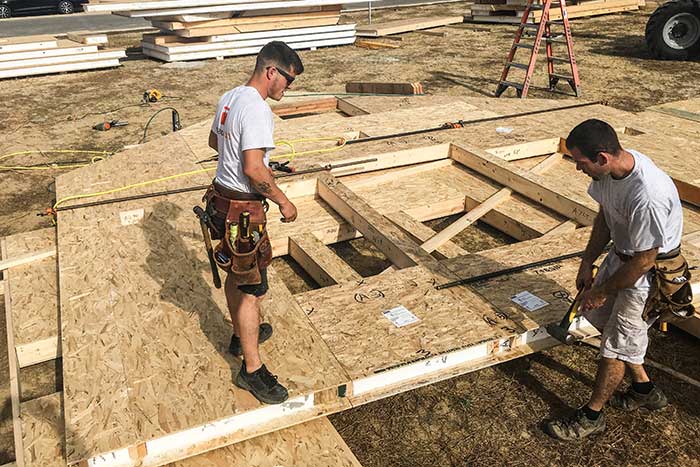What are S.I.P.s?
SIPs stands for structural insulated panels. Along with your timber frame, they are the structural building blocks of your home’s enclosure system.
Our SIPs are cut to exact specifications by a computer-guided machine off-site by our partners at Insulspan. They are produced with such precision that, once installed, they provide the most airtight and well insulated building envelope system available.
SIPs are widely regarded as a win-win both for the environment and for homeowners. Information on the many benefits of using SIPs can be found wherever you look.
BENEFITS OF BUILDING WITH SIPs
- Tests have shown that structures built with SIP wall and roof panels are 15 times more airtight than their stick framed counterparts with fiberglass insulation.
- Based on the reliable performance of SIPs, a blower door test is no longer required to meet Energy Star standards.
- SIP assemblies provide much higher effective thermal resistance than other construction methods. These properties allow the system to work in concert with other energy-efficient components like windows, doors, and HVAC systems to reduce heat lost by 40-60% over standard wood-framed construction.
- Higher R-value for your walls and roof means less heat loss and less energy needed for heating and cooling. SIPs increase timber home operating efficiency by creating an air-sealed, super insulated environment that requires smaller HVAC systems. Smaller HVAC units save energy, space, and money.
- Using SIPs combined with timbers maximizes floor space, adds flexibility to hybrid designs, and can lower overall costs.
- SIPs help create long lasting, sustainable timber frame homes with outstanding air quality, moisture control, reduced noise pollution, and accurate temperature regulation.
- Off-site fabrication makes SIPs a big part of our green construction practices. Installation of structural insulated panels is quicker, cleaner, and more cost effective than traditional framing.



